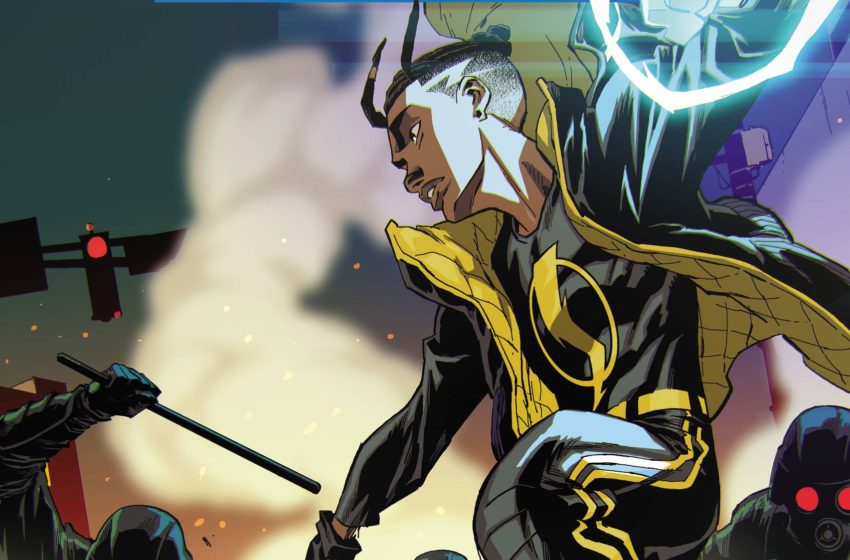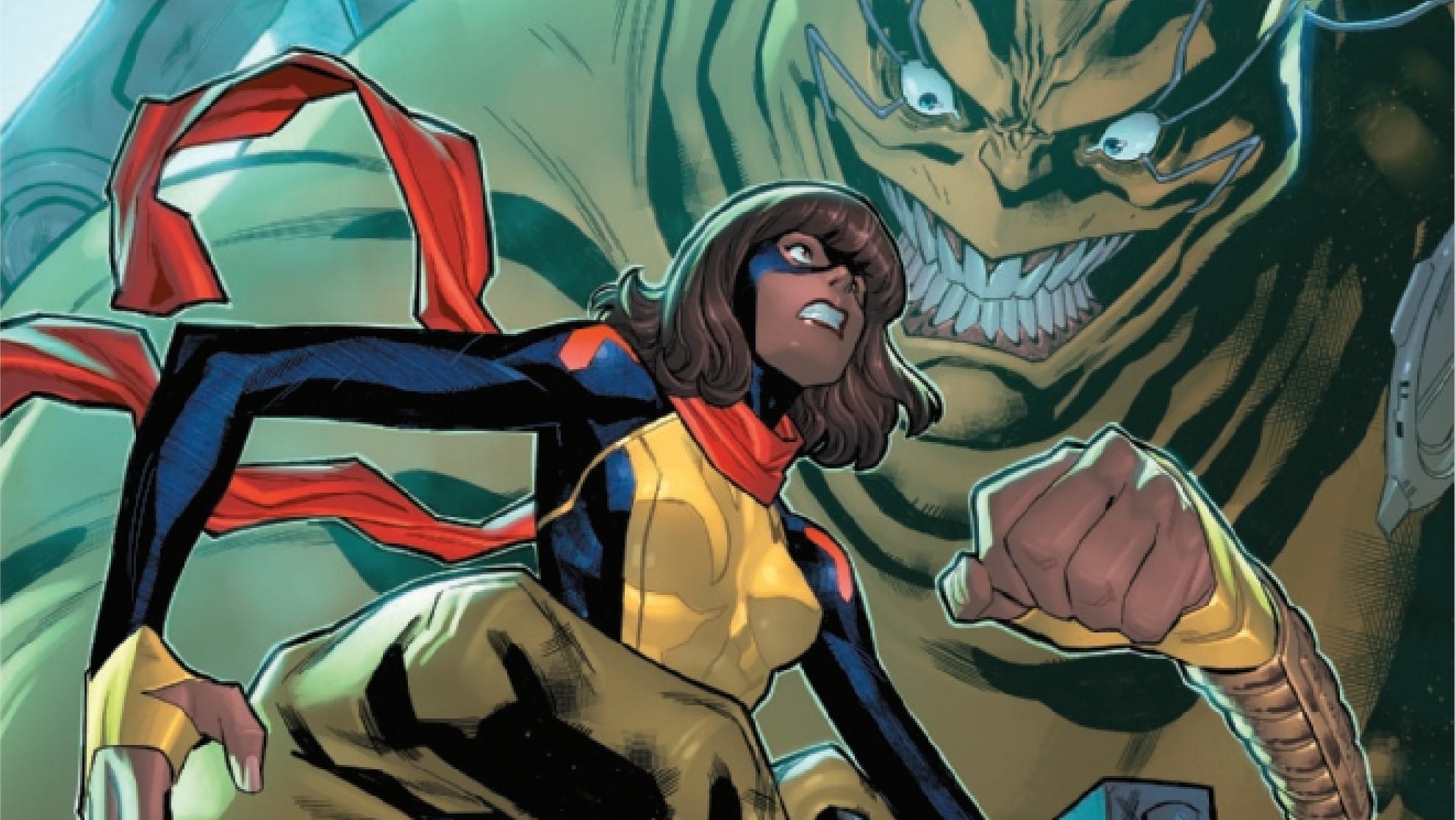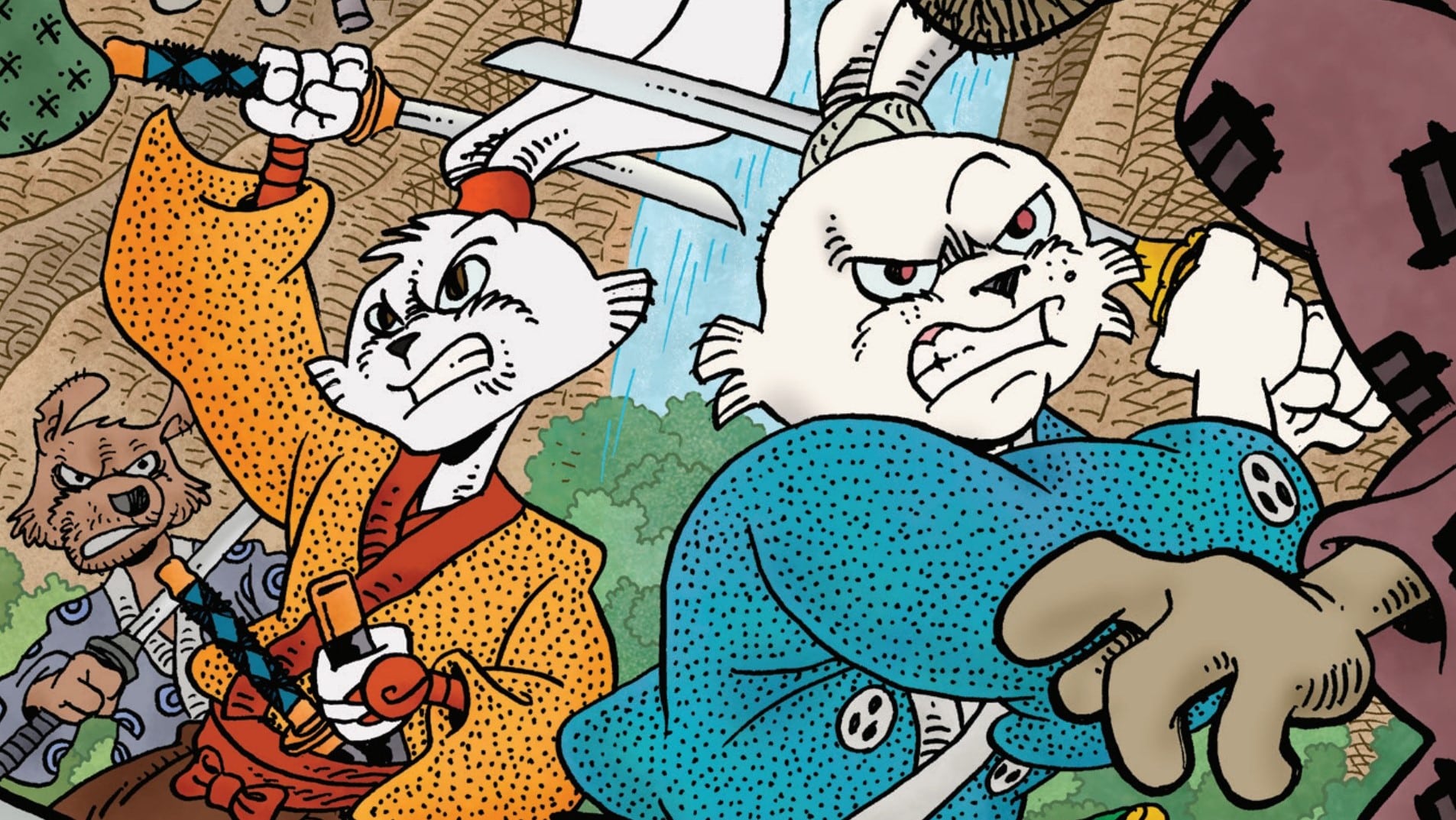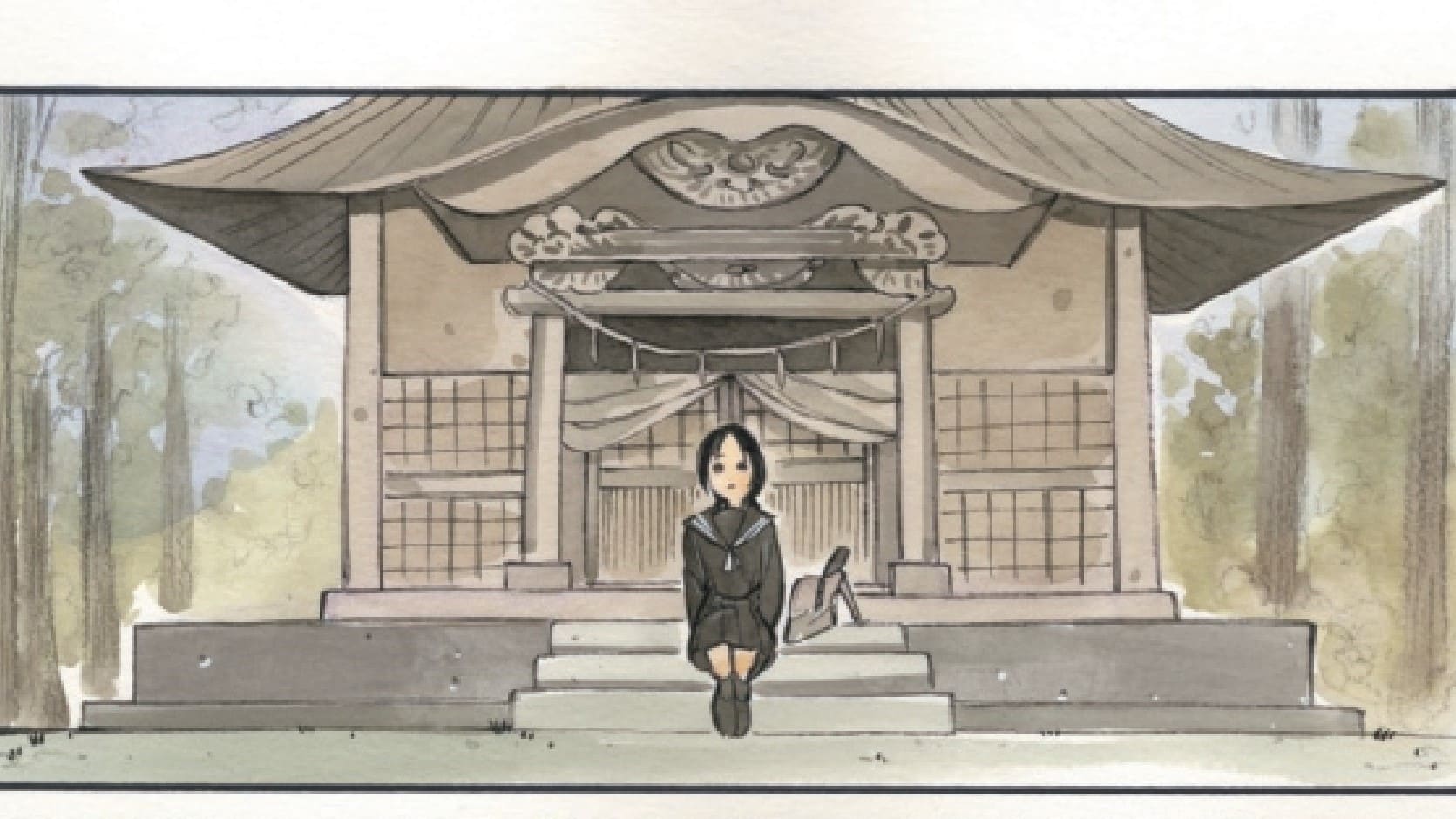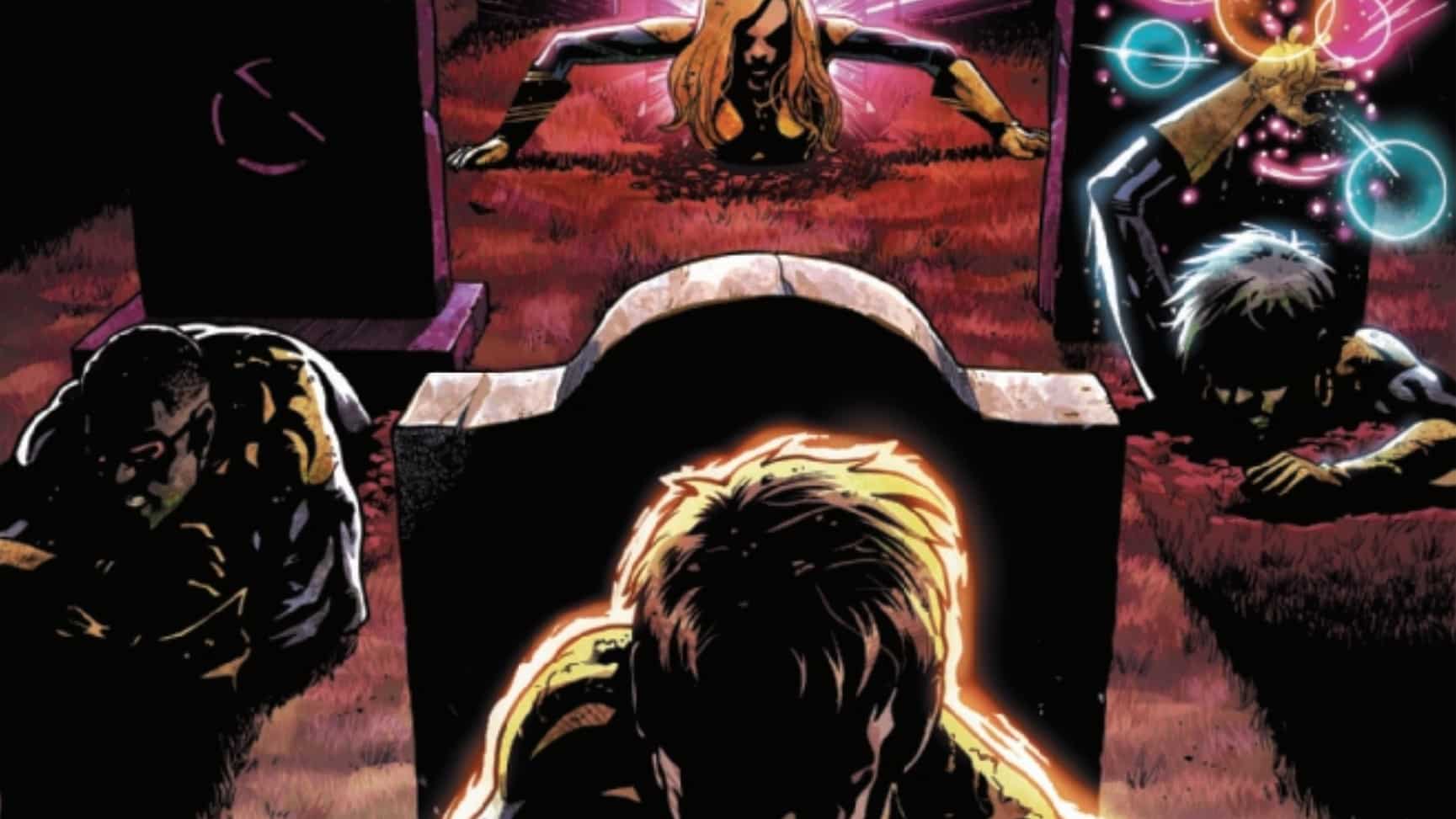Static finds himself confronting the police and the aftermath of the previous issue’s attack on his house in Static: Season One #3, written by Vita Ayala, with art by Nikolas Draper-Ivy and ChrisCross, colors by Wil Quintana and letters by AndWorld Design.
Midway through Static: Season One #3, the namesake hero mentions his desire to become a hero came from the 80s and 90s anime he watched with his dad. And as I think about this series – who it’s for and how it’s executed – I can’t help but think about the cartoons I grew up with, both the ones I caught after school and the anime I’d discover as I got older.
The after school cartoons were purposefully simple. The plots were generally self-contained in one episode. The action was fast and furious (just like the movies which might as well be cartoons themselves). There wasn’t much room – or need – for character building; the action was the attraction, and the purpose was to sell toys to kids.
The anime, on the other hand, was more melodramatic. More mature. More focused on character growth and plot pacing. Even the (bountiful!) action was tinged with (very melodramatic!) drama.
This, I think, is where I’ve been having trouble with Static: I’m not sure who it’s for, so it’s hard for me to judge its execution. Does it want to be an after school romp, or does it aspire to be more, to do more, to say more?
Who exactly is this comic for?
____________
Static #3 is all about trust: earning it, building. It, actualizing it, losing it.
We see Hotstreak, last issue’s house burning antagonist, offering up information for immunity. We see him building trust with a nameless, faceless entity, offering to betray other’s names and faces.
We see Static, in a case of mistaken identity, put trust in the intellect of his benevolent benefactor to get him out of a bind; we see cops, accosting the wrong man (but still oblivious to collateral damage) put no trust in the words of a man and all trust into their guns; we see Static, now facing trial by (gun) fire, learn to trust himself as his abilities manifest in unexpected ways.
We see Daisy, Static’s distraught friend, trust Static enough to disclose her abilities to him; we see Static trust her enough to comfort her and share what he knows.
We see how the love and trust of family and friends builds strong bonds; how the heroics of one are built upon the shoulders of many, as Static relies on his sister’s instruction to make a new suit, and his father and friends’ kindness to give him the courage to move forward.
And, ultimately, we see Static’s trust in friendship rewarded as he’s saved from Hotstreak’s betrayal at the last minute.
There’s a lot of trust here, which is probably intentional – it feels like trust might be the underlying theme of the work. There are also a lot of allusions, allusions whose intentions I’m not quite as sure about.
A Black family recovers from having their house (literally) fire bombed by a hate filled White man; a kid in a hoodie (Static) gets shot at by police; that kid in a hoodie, when he decides to be a hero, puts an X on his black cap. (Would a kid in 2021 would really don a black X hat? That’s a very specific allusion for a very specific person of a very specific age.)
The plot thus far has been kind of threadbare, your basic “bad guy and government plotting to hurt the innocent” motif; the enemies, one dimensional. Yet the cultural references are nuanced, and the allusions mature. Which, again, makes me ask: who this comic is for? The kid just discovering comics? The older fan with a strong case of nostalgia?
There’s a scene where Static helps his dad fix the fire damage on the roof. The two bond through an activity and some well placed quips. This is a genuine expression of father/son bonding, and maybe that’s how this comic works best – as a shared experience, from one generation to the next. I could see Static’s dad reading Static to Static. I think Static would enjoy that. I think his dad would enjoy that.
And really, I think that’s probably the best way to enjoy this: jointly, generationally. Unfortunately, I don’t think that’s how the majority of readers will consume the work.
The best of those 80’s cartoons worked because they understood exactly what they were and excelled at playing to those strengths; the best anime worked because the auteurs were dedicated to a singular vision.
When and if Static picks a vision – no matter what that vision is – the better off the comic (and it’s readers) will be.
A proud New Orleanian living in the District of Columbia, Jude Jones is a professional thinker, amateur photographer, burgeoning runner and lover of Black culture, love and life. Magneto and Cyclops (and Killmonger) were right. Learn more about Jude at SaintJudeJones.com.

